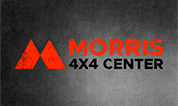Upping your Jeep’s off-road performance almost inevitably leads to the question of whether or not you should install custom switches to control your rig’s many electrical upgrades
Upping your Jeep’s off-road performance almost inevitably leads to the question of whether or not you should install custom switches to control your rig’s many electrical upgrades. If this is a question you find yourself asking—the answer is a resounding YES! With a switch panel you can control auxiliary batteries or fuel tanks, turn on your high-power trail lights, turn off your A/C compressor for added power, or pretty much wire up anything else with an electrical connection. All it takes is a rugged aftermarket switch panel, a handful of tools, and a simple grasp of how the process is done.
You'll Need:
- Your switch panel
- Terminal ends
- Wiring (make sure it’s high heat-rated)
- Shrink tube
- Vacuum tubing
- Liquid Tape
- Soldering gun
- Heat gun
- Screwdriver
- Drill
- Zip ties
- Wire Cutters/strippers
- Wrench
*Before you get started with any electrical work, be sure to disconnect the battery cables.
After you’ve determined where you want to install the switch panel, do a little bit of thinking and plan out the switches themselves.
Let's do this.
Step 1: Prepping Your Wires
Strip back a ¼ inch of each wire end and crimp the ends to terminal rings. Then solder the crimped end and use a heat gun to protect the soldered connection with a shrink tube.
Step 2: Wiring Your Panel
Run a positive wire from the panel to the positive end of the starter cable. Once this is accomplished, run a negative wire from the panel to anywhere on the engine block to ground it.
Step 3: Connect to the Fuse Box
Connect the terminal end to the fuse box, using a spare fuse of the proper amperage for whatever it is you are powering, and the other end to the starter cable.
Step 4: Clean Up
Use the zip ties to create a makeshift wiring harness so that you don’t have a mess of wires all over your engine bay. Not only is it easier than wrapping a whole role of electrical tape around the wires, but it also affords you the ability to make quick and easy changes if you don’t like the way a switch turned out.
Step 5: Attach Your Switches
With your connections secure, simply attach your panel to your desired location. This can mean simply bolting it on or cutting out a spot in your dashboard and installing the panel for a clean, sleek look.





